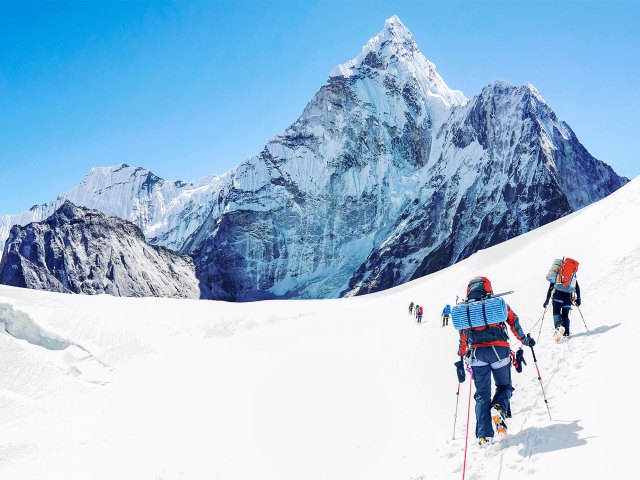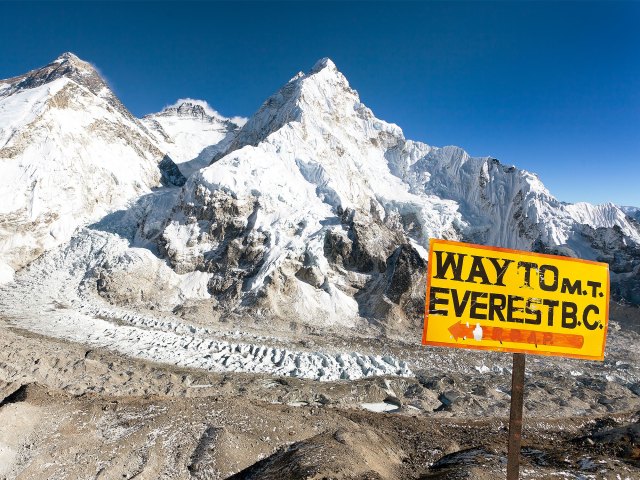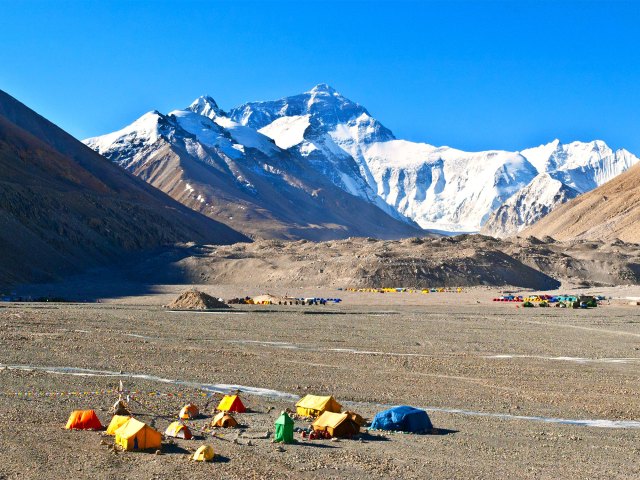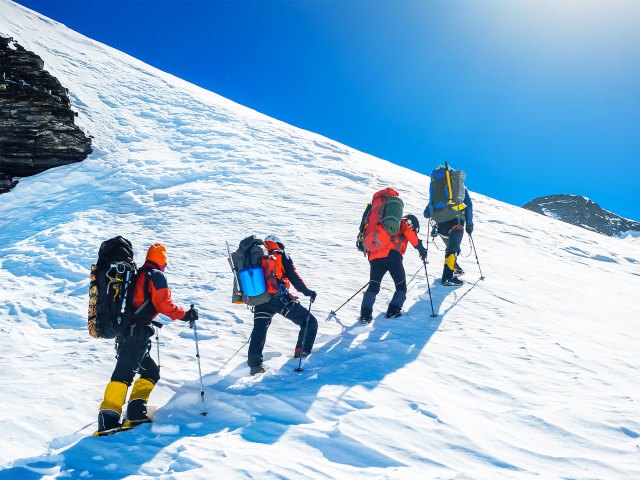Mount Everest has captured the world’s imaginations for centuries. The highest peak on Earth, Everest sits an incredible 29,032 feet above sea level, straddling the border of China and Nepal in the Himalayas. Thousands attempt the treacherous climb each year, but considerably fewer can claim the prize of reaching its elusive summit. Find yourself fascinated by Mount Everest? Here are five facts you might not know.
Edmund Hillary and Tenzing Norgay May Not Have Been the First to Reach the Summit

New Zealand climber Edmund Hillary and Sherpa mountaineer Tenzing Norgay were famously the first people to reach the summit of Mount Everest on May 29, 1953. However, they may not actually have been the first individuals to conquer the rugged mountain.
British climbers George Mallory led an expedition with Andrew Irvine to the summit nearly 30 years earlier in 1914. According to local legend, both Irvine and Mallory were seen climbing to the top. After the first sightings of the men, however, they were never seen again. A search team found Mallory’s body on the mountain in 1999, a few thousand feet from the top. Was he going up or coming back down? No one knows, and, unfortunately, Mallory’s camera wasn’t found with his body. The camera would have contained photographic evidence that Mallory and Irvine reached the summit nearly three decades before Sir Edmund Hillary. The search team never found Irvine’s body, however. If it’s recovered along with the camera, it could put the mystery to rest almost 100 years after the men attempted to scale the imposing mountain.
Everest Isn’t the Mountain’s Only Name

Everest was named after Sir George Everest, who first surveyed the mountain for the British government in 1865. The mountain sits on the border between Nepal and Tibet, and the Indigenous peoples living in the surrounding area knew of the mountain for centuries before Sir George Everest came along. They, of course, had their own names for it.
The mountain is also known by its Tibetan name “Chomolungma,” which means “Goddess Mother of the World.” It also has a Sanskrit name “Sagarmatha,” which means “Peak of Heaven.” Both names indicate that even before officials measured the mountain, its rugged majesty impressed the people living nearby.
The Mountain Reached New Heights in 2020

It turns out Mount Everest isn’t done growing. In December 2020, Nepal and China jointly announced that the world’s tallest peak is even taller than we originally thought. After both countries conducted revised mapping surveys, they determined the new height of Mt. Everest is 29,031.69 feet above sea level, more than two feet taller than some previous measurements. Before this, China’s official height for the mountain — which straddles both countries — was about 13 feet lower than Nepal’s. Mount Everest rises about 1.6 feet each century as the Indian and Eurasian tectonic plates beneath it move. It’s had the world’s tallest peak title since 1856, when mathematician Radhanath Sickdhar measured the mountain while working for the Great Trigonometrical Survey.
Expeditions to the Summit Take About Two Months

If climbing to the top of Mount Everest is on your bucket list, you may need to take a sabbatical or quit your job. The average expedition takes about two months. But you won’t spend the entire time climbing the peak — you’ll be doing a lot of sitting around in those two months. This is because climbers must spend the majority of the time allowing their bodies to acclimatize to the environment. There’s much less oxygen at that altitude, so your body will start to feel oxygen-deprived unless it’s allowed to adapt gradually to the changes. At each camp along the way, climbers will need to spend a few nights getting used to the environment before moving on. Most climbers use supplemental oxygen once they get to higher altitudes.
Climbers Can Expect to Lose Between 30 and 50 Pounds on Their Trek

Mountaineers who make the trek can expect to lose up to 50 pounds during the two-month climb. It’s the environment on the mountain that leads to so much weight loss. The combination of the cold temperatures, physical activity, and lower oxygen levels all lead the body to burn more calories than it does at lower altitudes. Weight loss can become a life-threatening issue for climbers, however. Burning so many calories within such a short period can make climbers more susceptible to frostbite and fatigue. Both can prove deadly when trying to reach the peak.
More from our network
Daily Passport is part of Inbox Studio, which publishes content that uplifts, informs, and inspires.
















